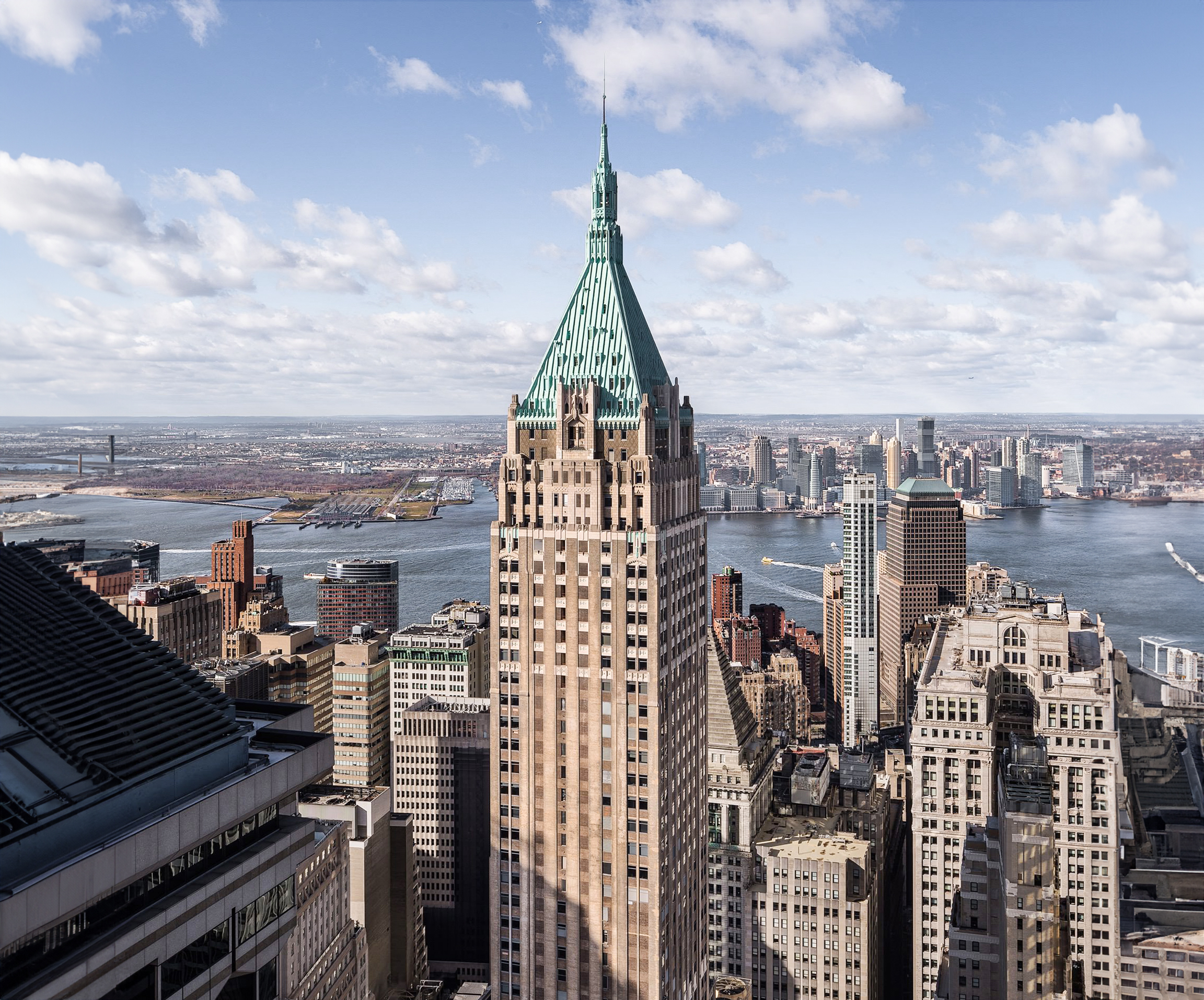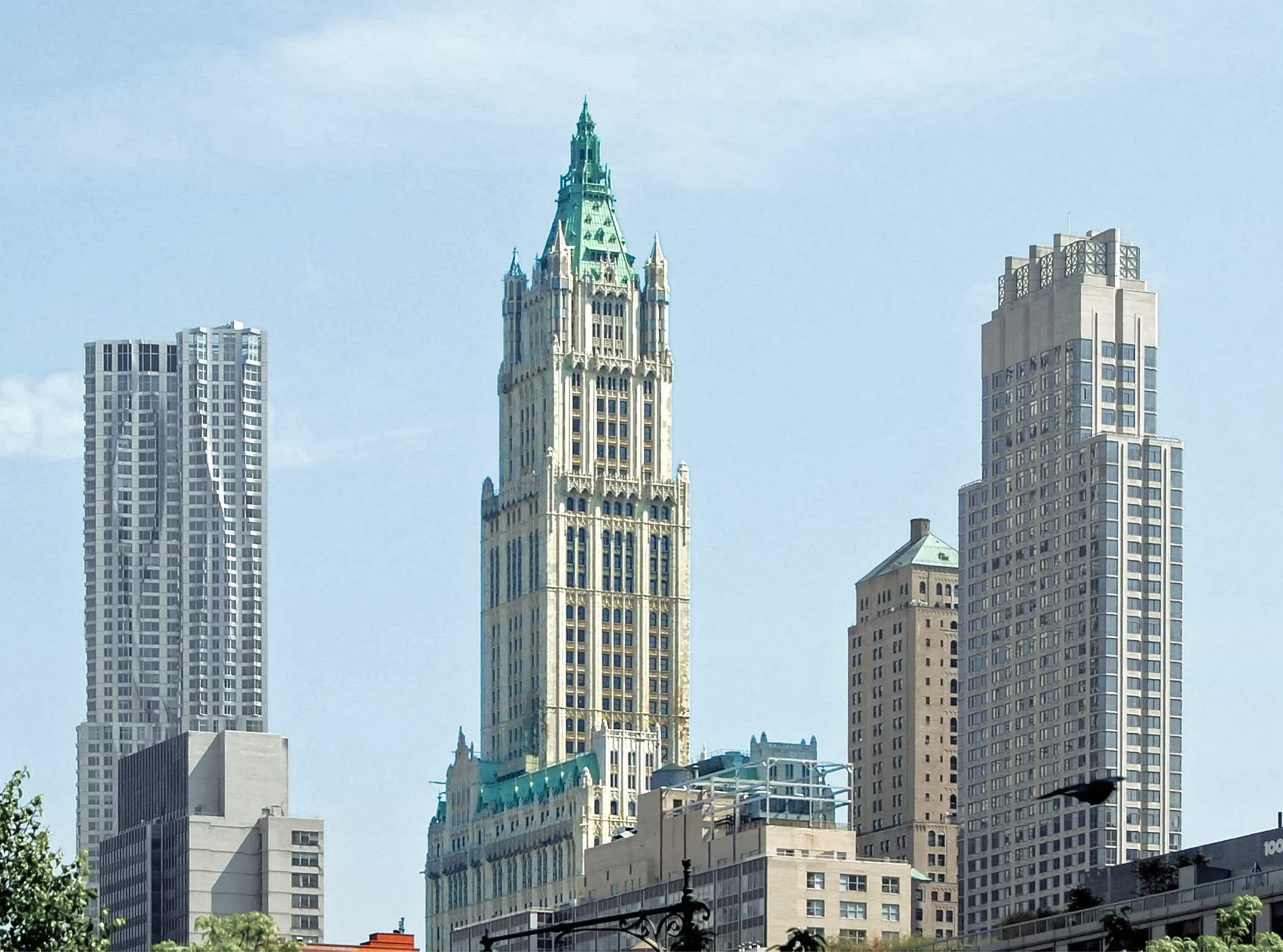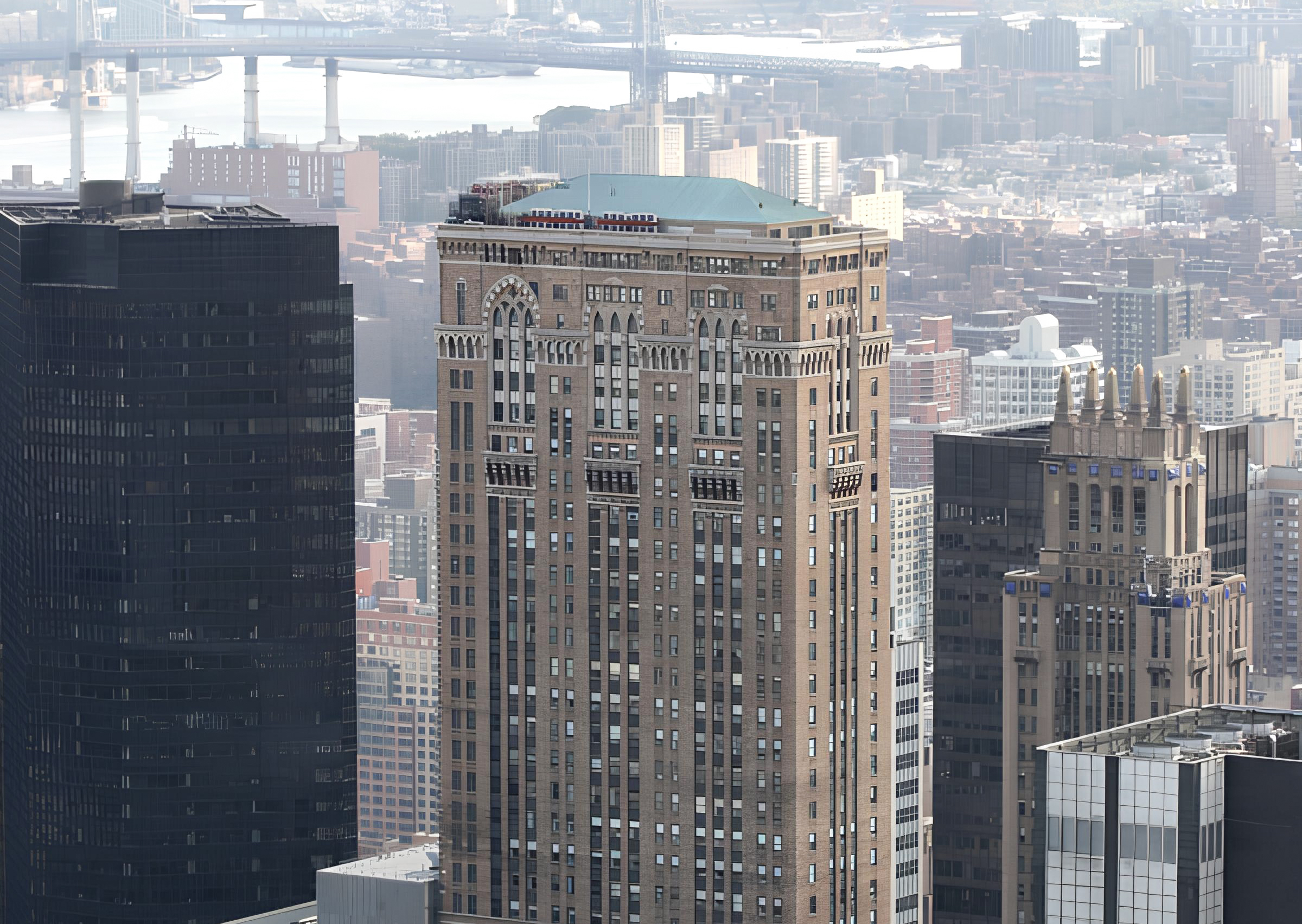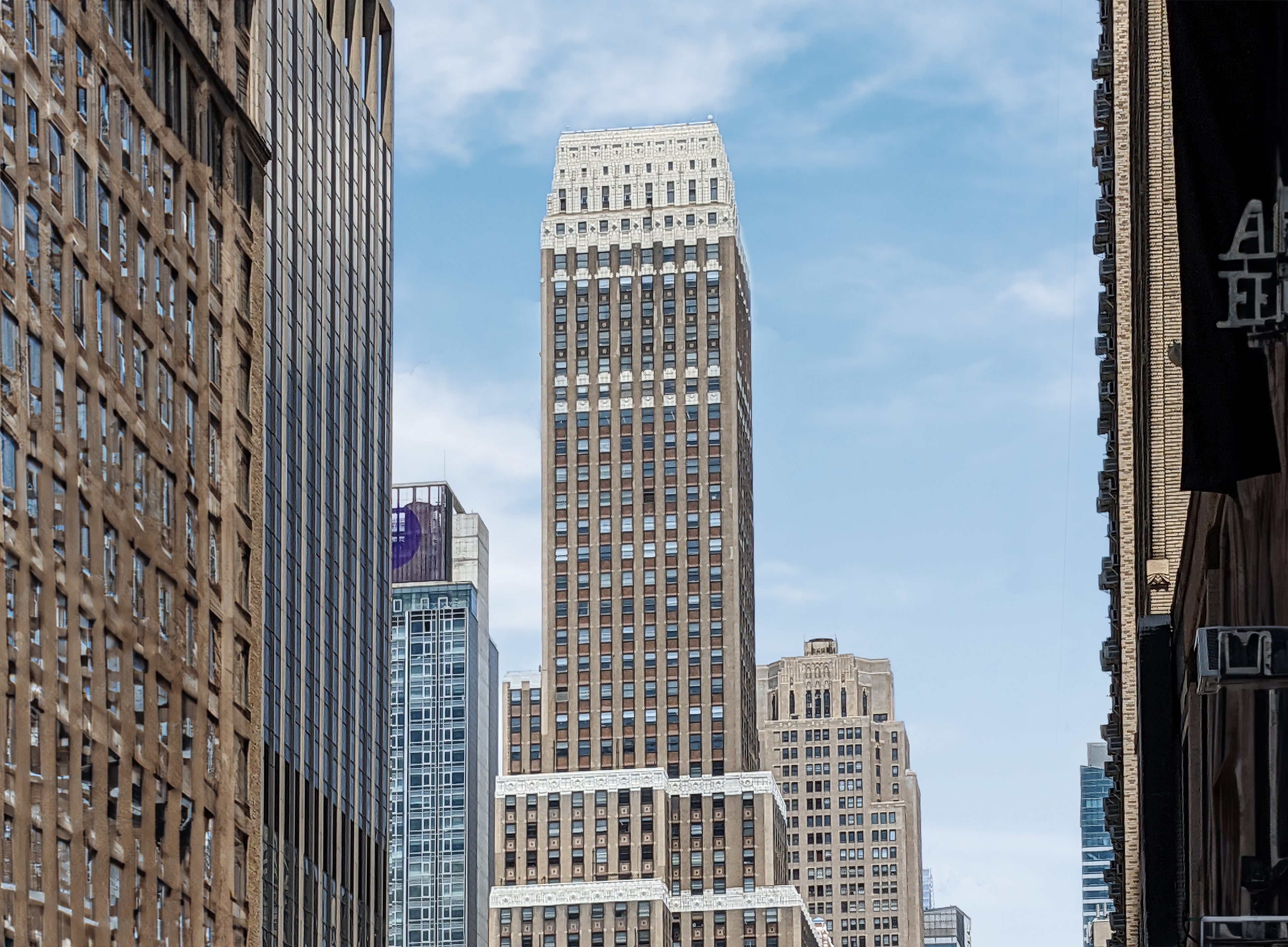The 40 Wall Street Building is a Neogothic skyscraper designed by H.Craig Severance, in association with Yasuo Matsui, and built between 1929 and 1930 in New York, NY.
40 Wall Street Building is not the only name you might know this building by though. It is common for companies to want to attach their names to iconic buildings when they move in, or for the general public to come up with nicknames, and this one is no exception. The 40 Wall Street Building is also known, or has been known as, Bank of Manhattan Trust Building, Manhattan Company Building, or Trump Building.
Its precise street address is 40 Wall Street, New York, NY. You can also find it on the map here.
The 40 Wall Street Building is a structure of significant importance both for the city of New York and the United States as a nation. The building embodies the distinctive characteristic features of the time in which it was built and the Neogothic style. Because of that, the 40 Wall Street Building was officially included in the National Register of Historic Places on June 16th 2000, and was also included in the New York Register of Historic Places on December 12th 1995.
The building has been restored 2 times over the years to ensure its conservation and adaptation to the pass of time. The main restoration works happened in 1963 and 1995.




